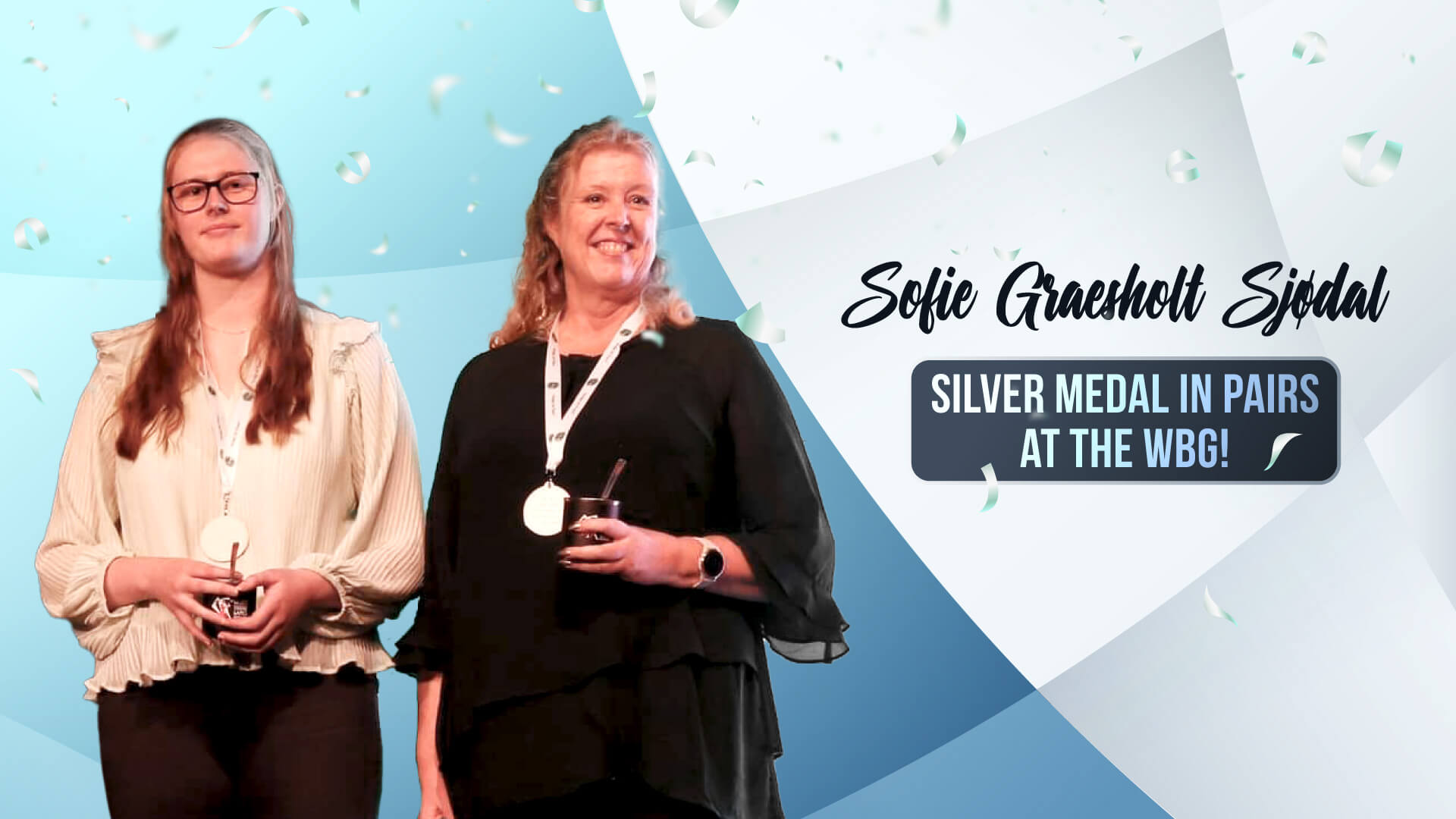
World Championships: A silver medal with my mother
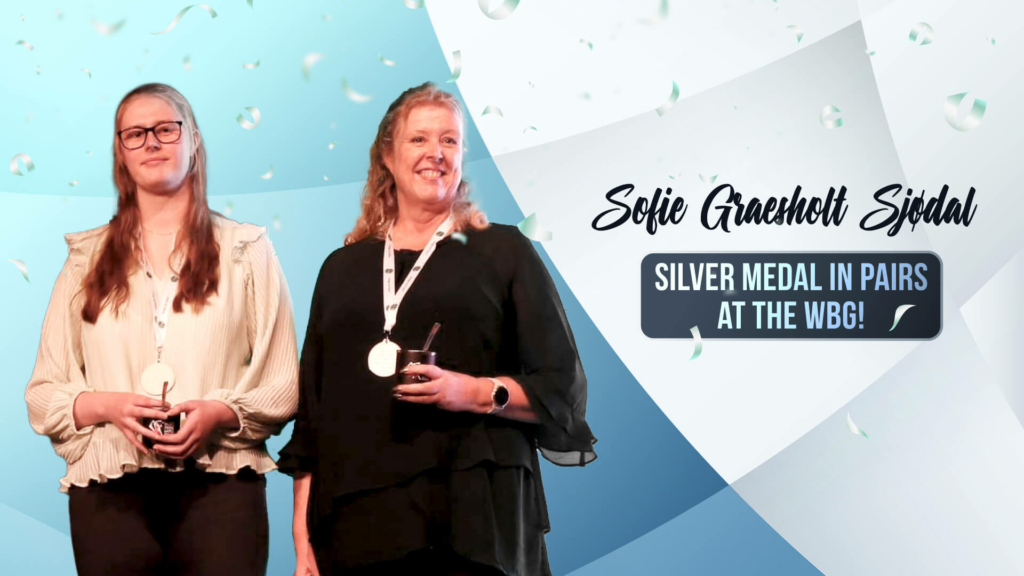
Sofie Græsholt Sjødal is a Norwegian player. She won many European and international titles. Member of the Team Funbridge, Sofie also plays with her mother Elisabeth.
After six days of everyone meeting everyone in mixed teams, a one-day round of 16 and two days of quarter finals, some of the team members were ready for a small break. I could also need a one-day break, but the alternatives were no break or four days off, and what were we going to do in Argentina for four days? Be tourists like? My mother Elisabeth, who had played a bit less than the rest of the team so far, was really ready for some more action, so we signed up for the World National Women’s Pairs. The tournament started on the very same day as our quarter final ended, which meant that we missed the first part of the qualification. We therefore got straight to semi-final A. Unfortunately, there weren’t that many women’s pairs registered for the tournament, so we played our semi-final together with mixed pairs.
An above average first session
A total of 24 pairs took part in the semi-final and we were informed that 15 pairs would qualify for the final, that should be arranged together with the mixed pairs, and 3 pairs from semi-final B were allowed in too. We started our first session slightly above the average (50%) after some swing boards. First, let’s take a look at some defence play against a top American mixed pair:
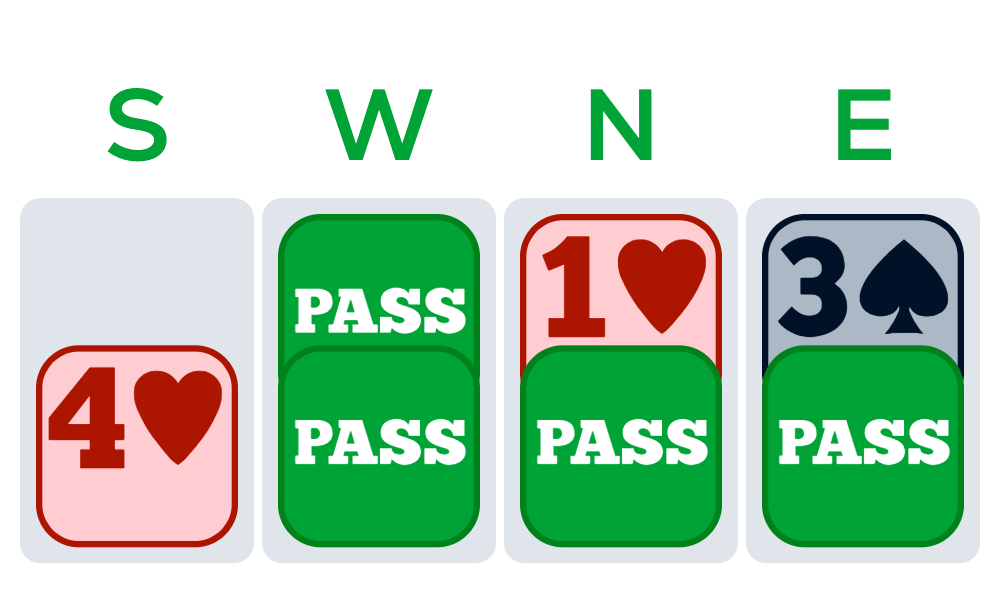
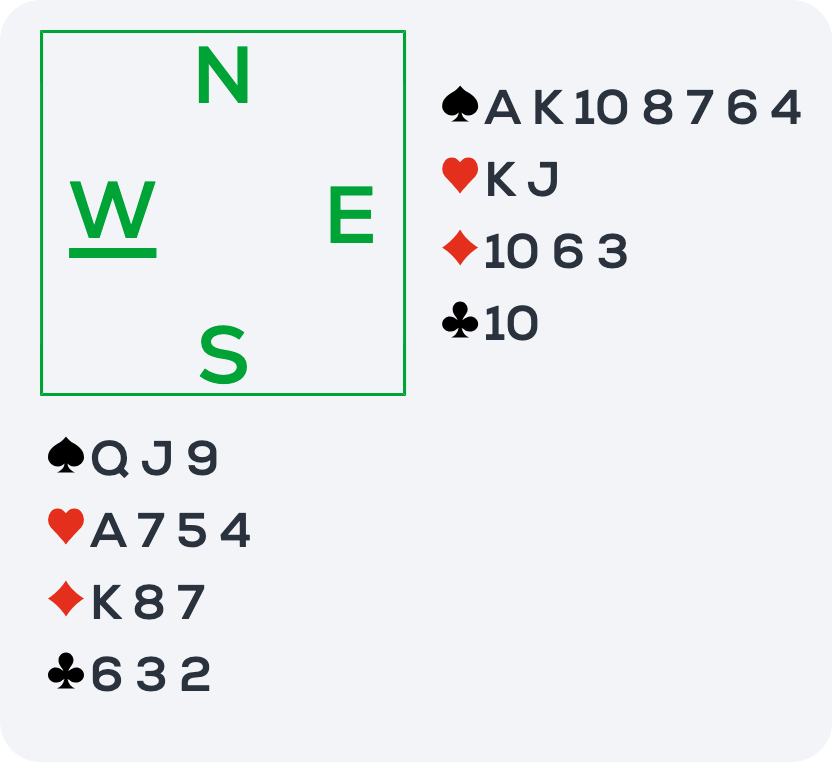
Since my partner West had passed and I had KJ of hearts, from the outset I didn’t think that my hand was very attractive. I was considering a variety of different bids, like 1S, 3S and 4S, since we were all non-vulnerable. Even though I didn’t fancy my KJ holding in hearts, there could be defensive tricks, so I chose to (only) bid 3S, hoping that 4H would go down. I led the ace of spades, my partner followed with the 5. In this kind of situation, we always play a small card from a doubleton, so I knew that my mother’s 5 was a singleton when the declarer followed suit. Since the missing spades were the 2 and the 3, the 5 had to be a singleton. Despite that, I got greedy and chose to bet that my partner was holding the ace of clubs. It actually worked out fine this time. I played the 10 to my partner’s ace and got another club back that I could ruff. Instead of cashing my king of spades, I returned a small spade, hoping that my partner could ruff and continue with another club to my king of hearts. And that is what she did, giving me a second ruff. A total of five tricks to the defence and two down for the opponents.
Here it turned out that we won the board during the bidding as even one down gave the top score and at all the other tables East-West played the contract, all going down. So, we won the board as long as we had the score on our side. Here is the full board:
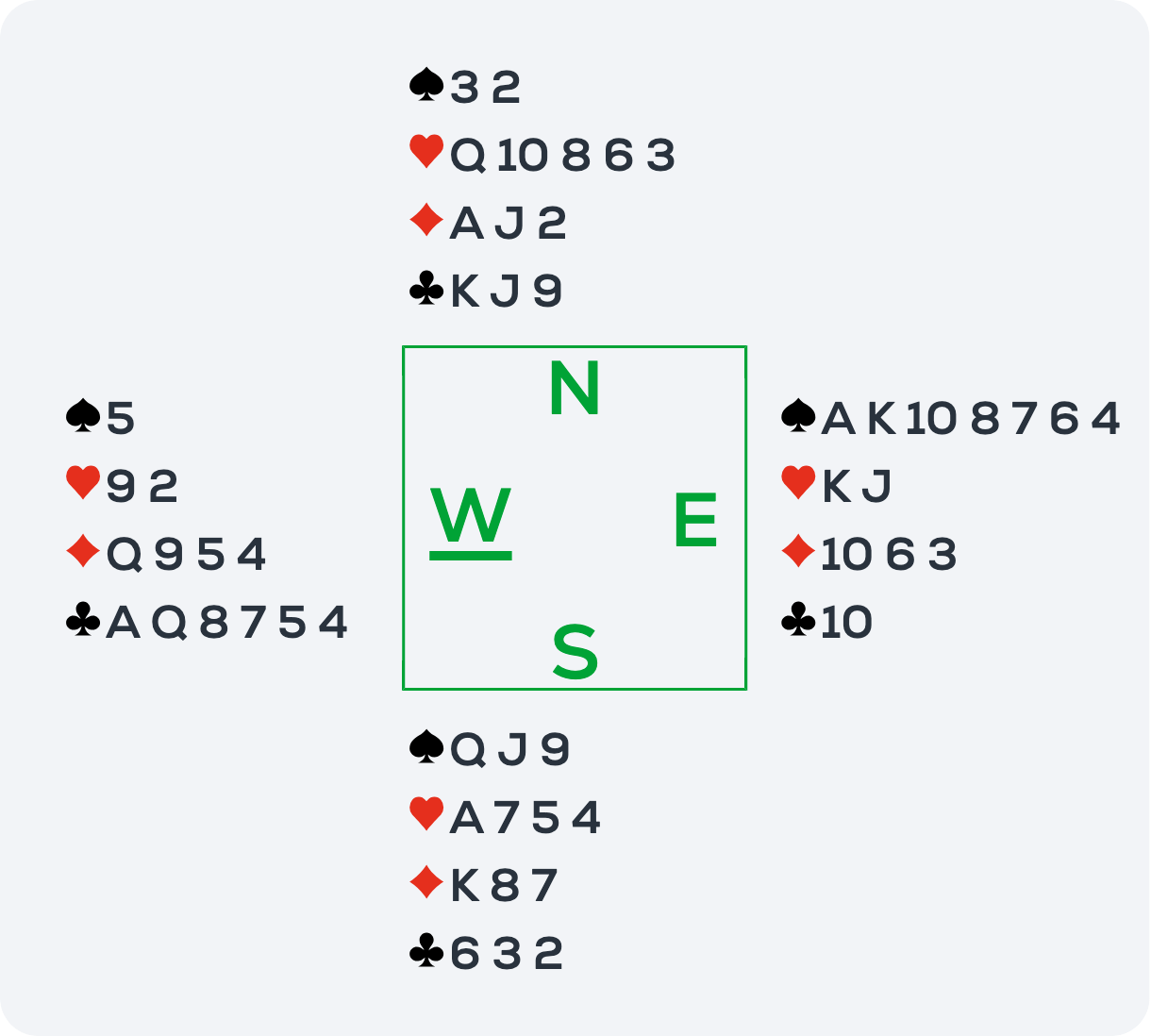
The rest of the day was punctuated by quite a lot of swing boards that we didn’t play particularly well. Consequently, we ranked 18th after the first day, having played two boards against all the other participating pairs. We were not far from the qualifying top 15 and we knew that we had a lot more to offer. Thus, we thought that day 2 would be a turning point. However, when we started, there were some changes in the tournament set-up. There were a few more women who hadn’t registered for the tournament, so it was decided to run a separate women’s final consisting of the top 10 pairs. After some investigation, we found out that this meant that all the 7 women’s pairs in semi-final A and three pairs from semi-final B would qualify. In other words, we were already qualified for our first World Championships final! So, we could relax a bit more, but we didn’t take it easy because we wanted to get as much carry-over as possible in order to have some margin.
A much better second day
Day 2 turned out much better, and we were pretty satisfied with our own play. After a somewhat lazy first round, we played 14 good boards thereafter, and we actually won the first session among both mixed and women’s pairs. With almost 60% in this session, we climbed up the ladder above average to reach the 9th place in the rankings.
“It’s a bidders’ game”. One of the reasons why we did well in the first session is that we pushed the opponents to the maximum all the way, leading them to make wrong decisions in critical parts of the biddings. Here are two examples in a row (boards 7 and 8) where we won the contract at the 5-level.
On the first one, the bidding went fast :
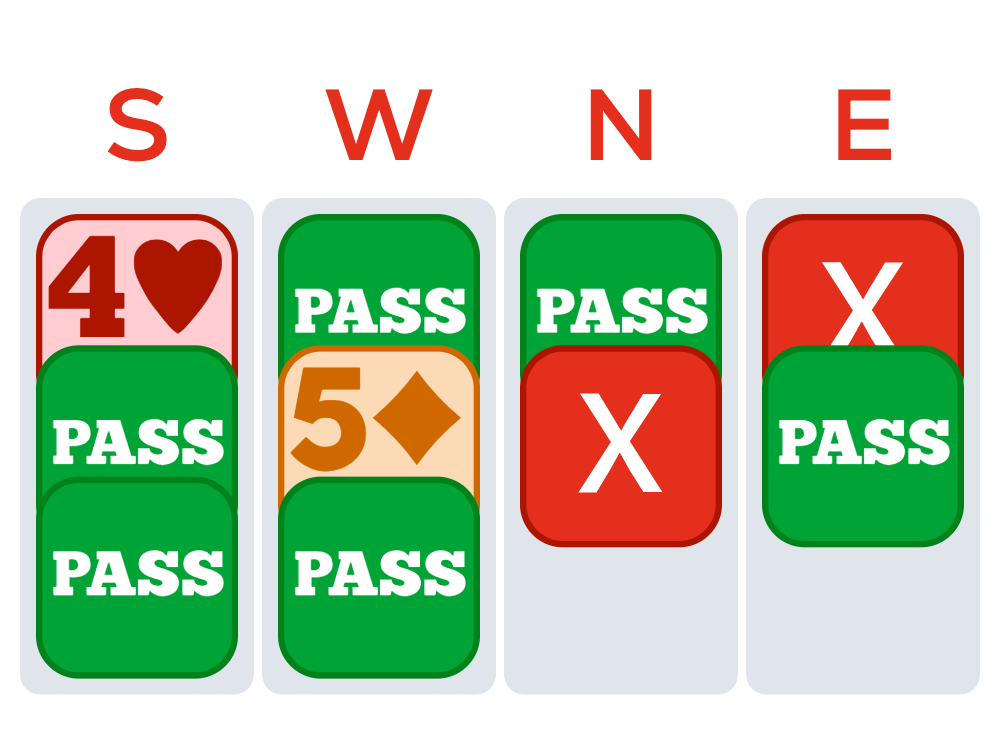
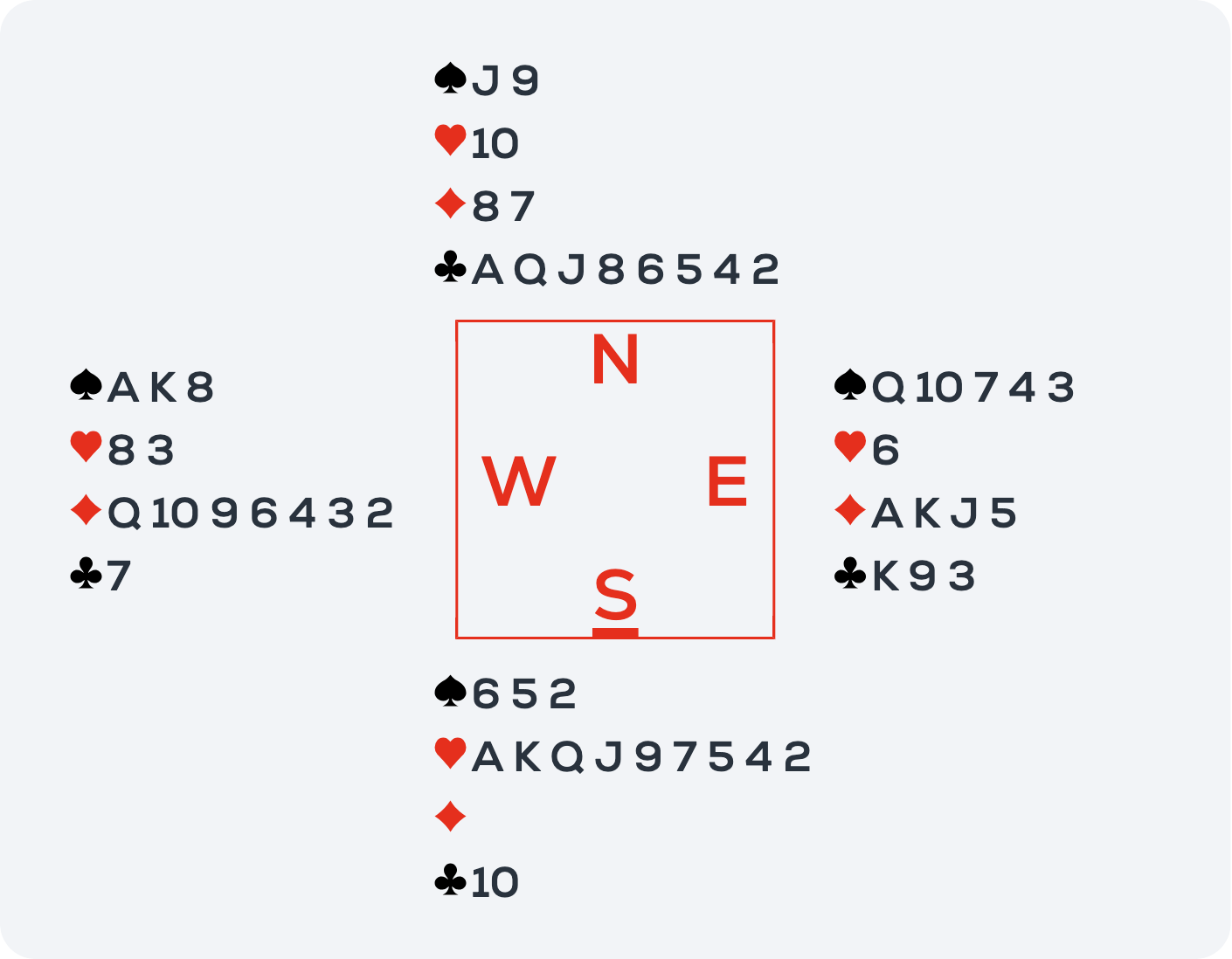
North was hoping that South, who had opened 4H being vulnerable, had 2 tricks and that her own hand should give 1 trick. Too bad, this was not the case this time, and the opponents were actually good at securing their potential 2 tricks, as the spade suit gave potential for getting rid of losers, but that didn’t really matter at all. Second best score for us and 91%, only beaten by 5Sx +1.
The next board against the same opponents also turned out to be exciting going along.
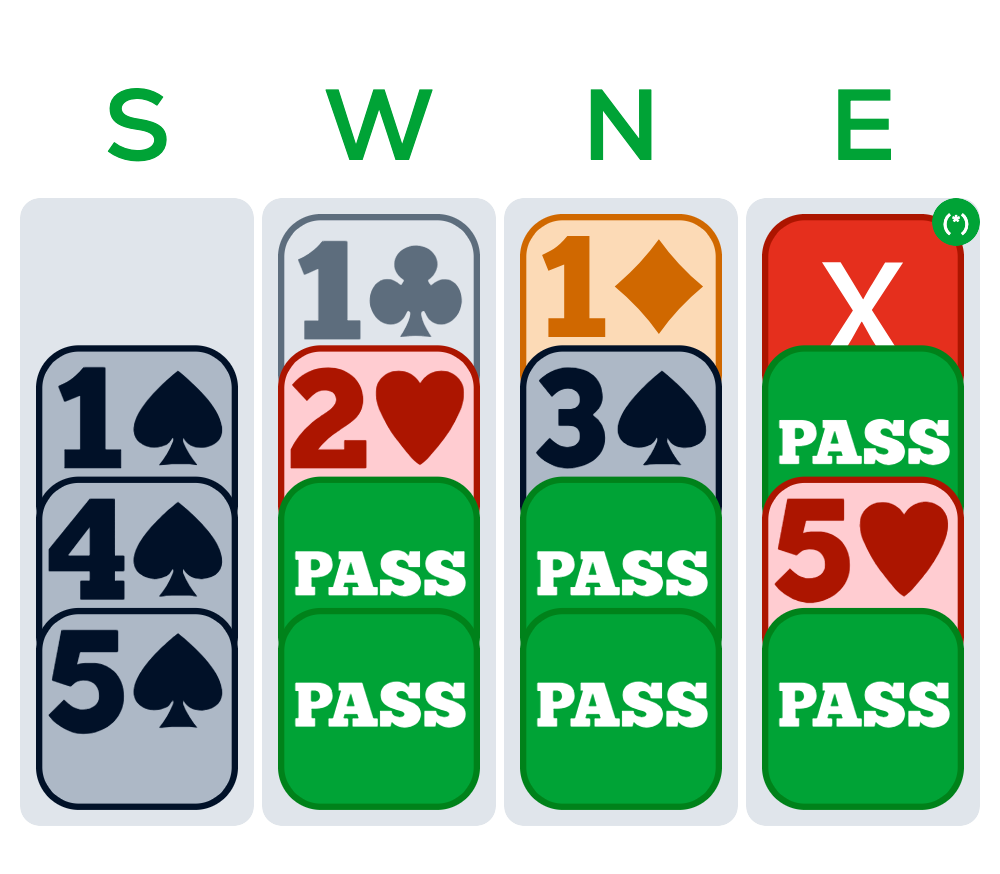
*Shows 4+ hearts
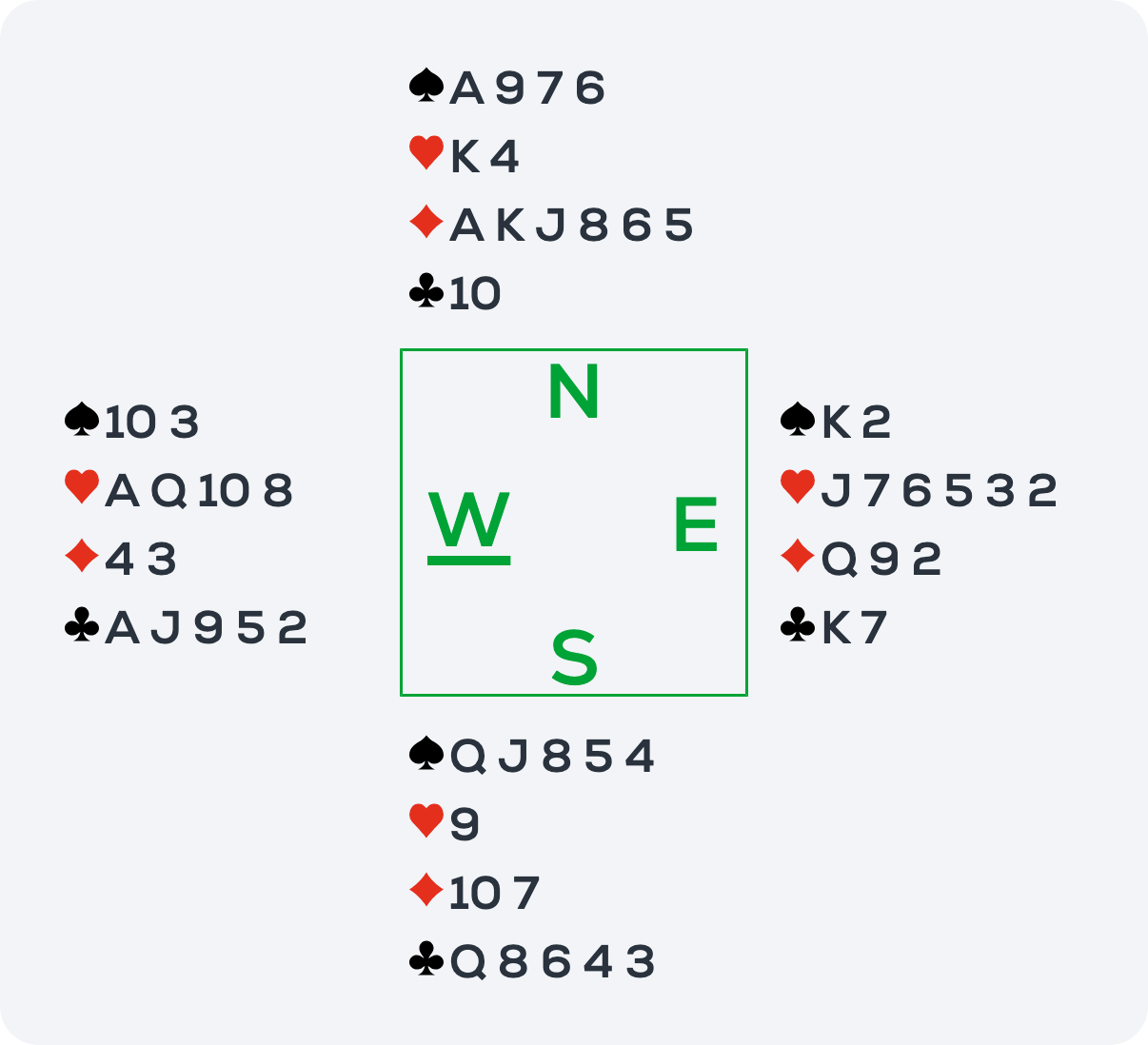
Over the 3S bid, I was afraid that a potential 4H bid could push the opponents to a winning 4S, so I chose to pass. But when they bid game on their own, I chose to enter the bidding again with 5H. I could be wrong, but I saw two upsides: either we only go two down (doubled) or the opponents go for 5S and don’t make it. They chose to bid 5S, which is not a win, and 5Hx was also only two down, which would have also been a good score for us. The margins were on our side this time!
We did good for the rest of the day too, finishing 10th across the whole field (Women/Mixed). We were the best women’s pair and we headed into the final with two tops more than the last qualified pair. I got more than one medal on carry-over, so I can live with that.
We started the first day of the final with lots of swing boards. Out of the first 15 boards, no less than 7 of them were either 0% or 100%! This is usually not a good sign, so we wanted to reverse the trend. The second session was much better and out of the 4 top/bottom boards that we had, 3 were 100%, so that was good enough. The 3rd session was also pretty much OK, albeit we felt that things could have been a bit better. How were the top/bottom boards there? 4 out of 5 were 100% for us, so not too bad when things are so much in our favour. After the first day of the final we were 3rd, but surely felt that we still had more in us. Even with some minor mistakes, both made by ourselves and our current opponents, we were still hoping that we could compete for a medal before the last day, but we had to upgrade our play. So, we ended the day with a simple and quick dinner and headed for a quiet evening before the final day. Like most other days, we ended it watching an episode of our favourite TV series in bed before going to sleep early and getting ready for this important last day.
A third day from lows to highs
The day didn’t start too well. All that we could miss, we missed. We were fooled by our opponents and ended with a 44% score. We couldn’t go on like this! We hurried up to one of our two regular lunch restaurants for a quick pizza bite, and we even got some sun before we went back and hid ourselves in the dark and quiet Vugraph area, where they were having a break from broadcasting the finals. In spite of the bad session, we were still in 4th place and as there wasn’t a big gap between the 3rd and 4th positions, we still had some hopes of stepping onto the podium. We had certainly not lost heart! The first round after the lunch break was actually against the German pair ranked 3rd. Very nice people and opponents whom we would have loved to have a nice chat with, but sitting down at the table it was all back to business. We desperately needed good scores. Even so we had no plans to do anything crazy, we just wanted to play good bridge. However, when the chance to be a junior came along, for sure I had to take it.
At favourable vulnerability, in first position, I had this beautiful hand:
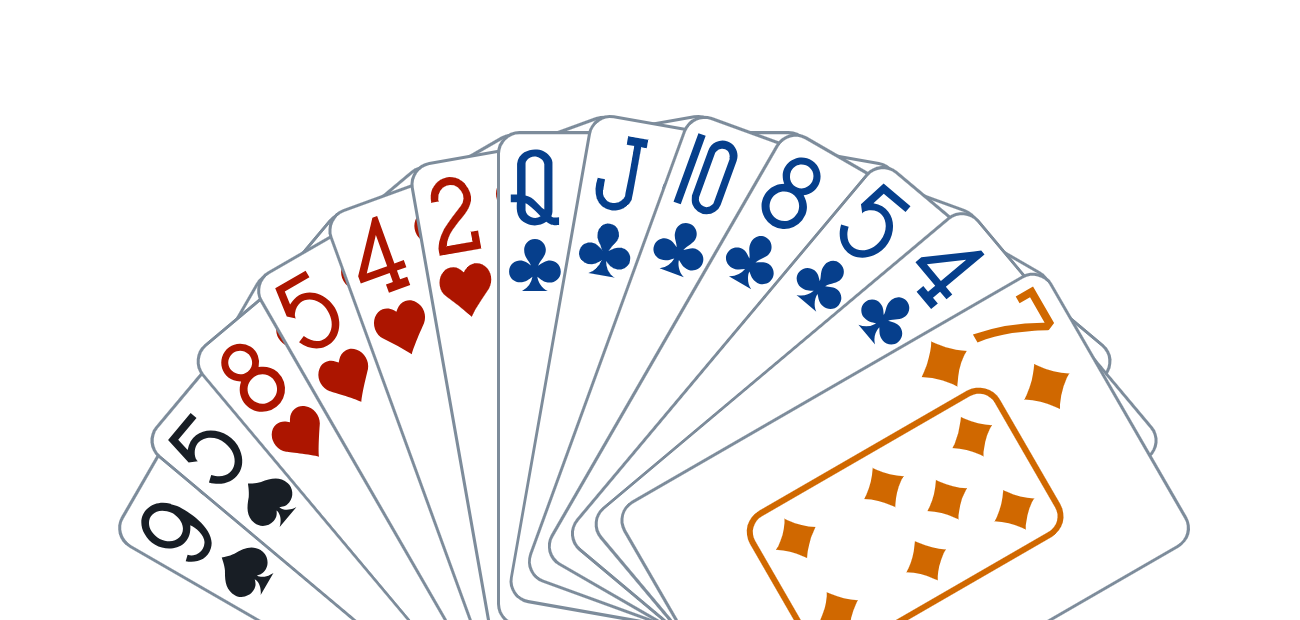
Why are you so excited, Sofie, you might think? What do you mean? We scored 100% on this one! Of course, I chose to open 3C – let’s put some pressure on the opponents! However, this time I ended up pushing my partner who had most of the cards, but no problem. The bidding went on as follows:
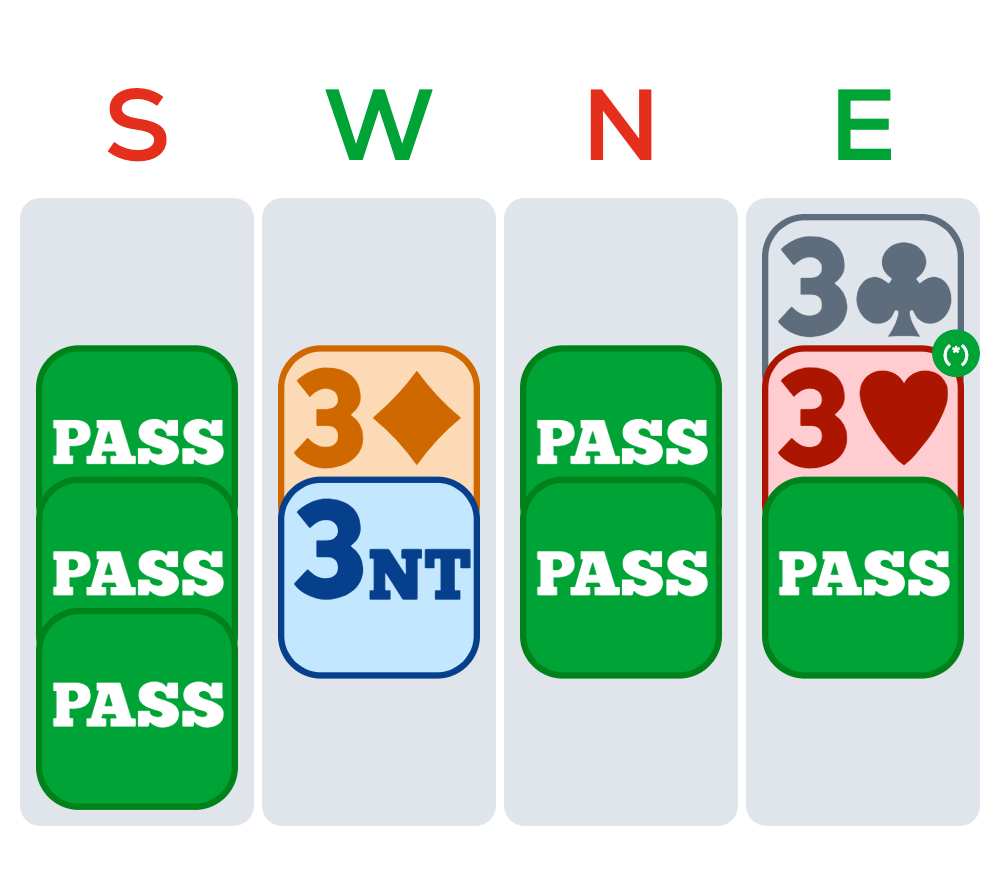
*3H showed 3 cards in hearts, possibly a bad 4-card suit. We do not open 3C with a solid 4-card heart side suit.
Now the opponent had to find a good lead from this hand:
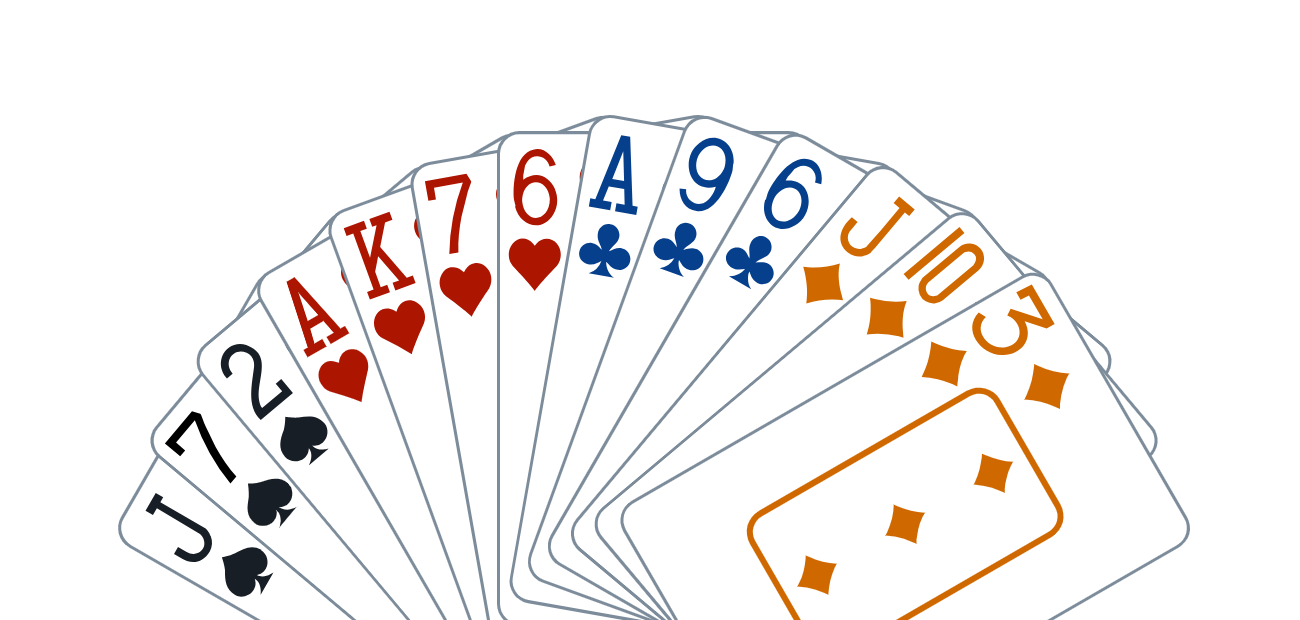
She went for a small heart, hoping that dummy had something like Q10x and declarer chose to try the 10, which would have been natural. Not bad thinking at all, I could have easily drawn the same conclusion and made the same lead myself. However, the dummy didn’t look quite like that:
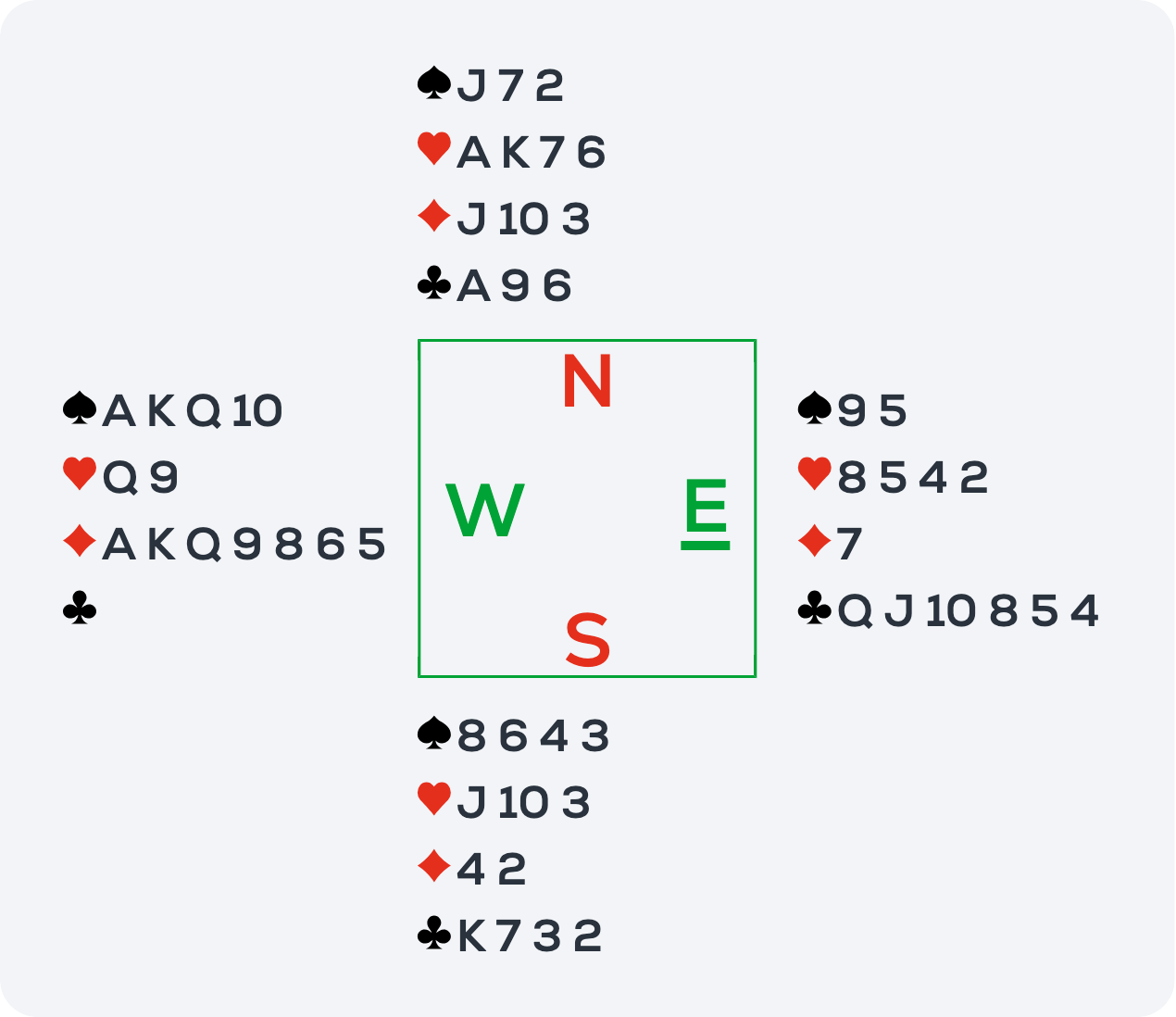
When the diamond suit split nicely and the jack of spades also showed up on the 3rd round of spades, the only challenge for the opponents was to keep their hearts right. Not that it really mattered… Whatever they did, we got a 100% score. A little oops from North, but nothing to blame her for really. This board came right after a small misunderstanding between me and my mother during the bidding, where we ended up in a tough game contract. The opponents failed somewhat in their defence play, which meant that we secured a 100% score against a pair who was also fighting for a possible place on the podium.
The rest of the session was also good – very good to be honest! We achieved a score above 67% on the session, and again what about our top/bottom ratio? All four were 100% actually… We were now ready for the very last session. We had climbed all the way up to 2nd place, but the leaders also had a good session with nearly 64%, so we were still 3.43 percentage points behind. However, we were just about to face them on the first round of the last session, so even though there was quite a gap, nothing seemed impossible.
Anyway, we decided to focus on ourselves, play good bridge and hopefully secure a medal. And the World Championships title would be a bonus. We sat down, all ready to play the last 15 boards, including the first 5 against the leaders. It started off with a 2S contract our way, where they ended up losing a defensive trick, so I knew that this one was a good start. On the 2nd board, they ended up in a 4S game contract, which I doubled. Because of my double, the opponent misguessed the spade suit and went 2 down. Another good score for us. Then came board 3:
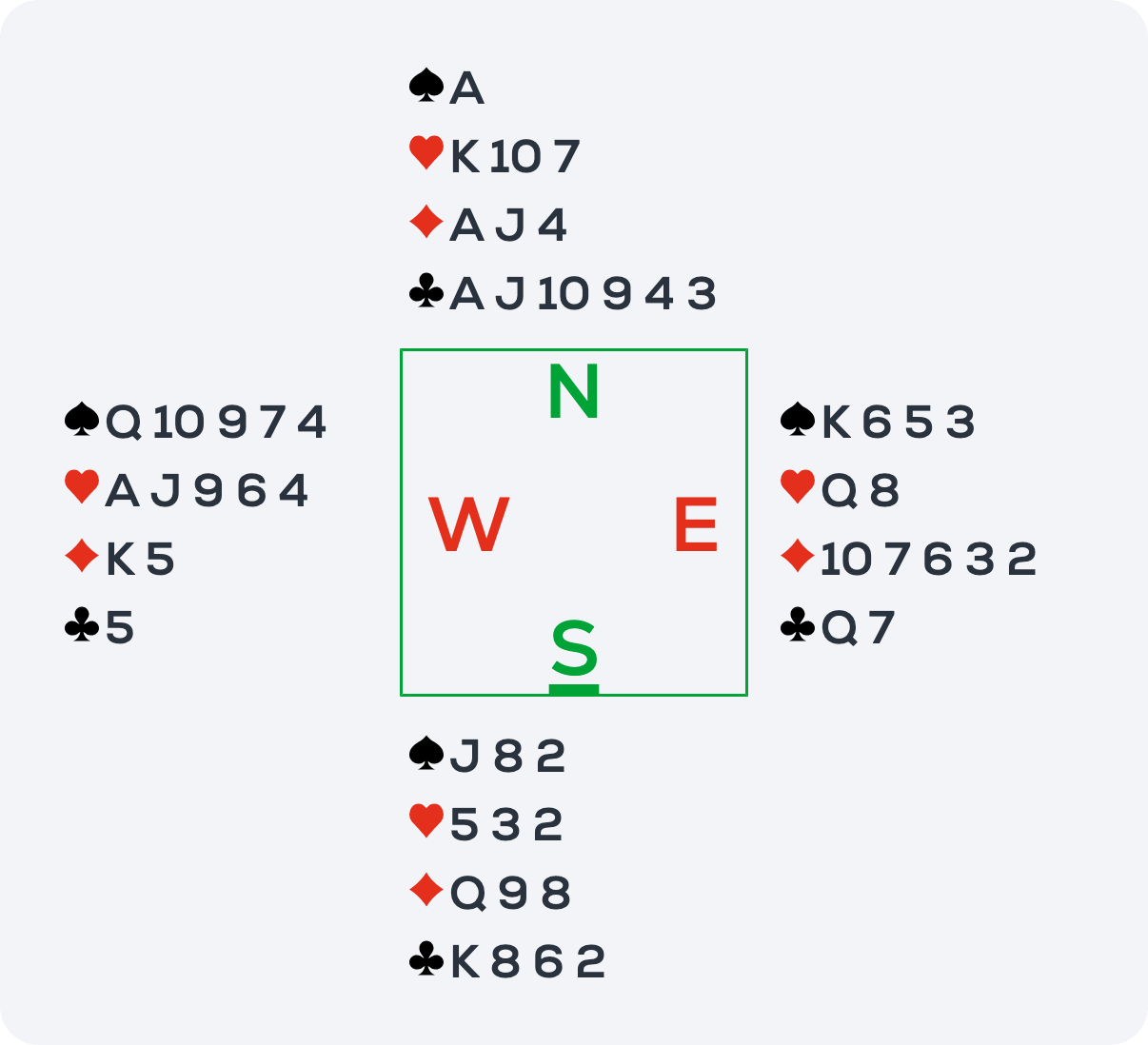
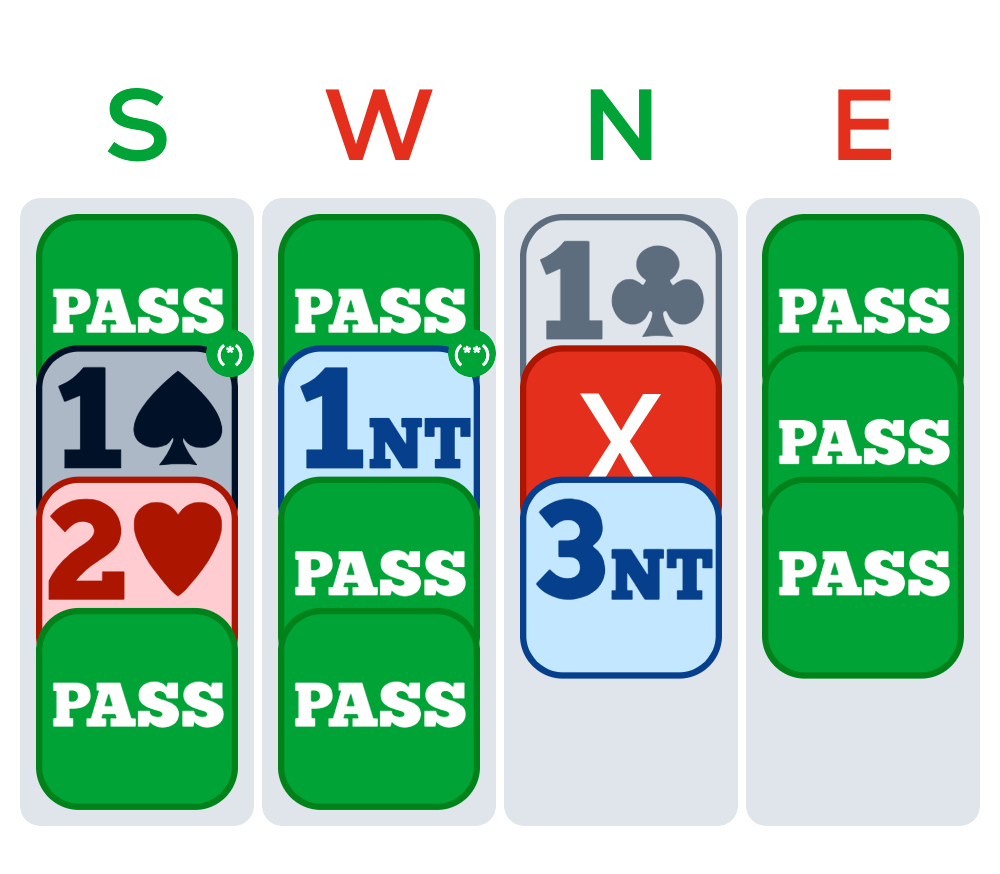
*1S showed either a NT hand with 6-9 points (in which case you usually bid 1NT) or a diamond suit.
**1NT was explained as a balanced hand of 10-11 points to North, but as both majors to South.
In major championships, we always play with screens at the table, which means that you only sit with one opponent, who has to explain all the bids made by the opponents. Consequently, you and your partner could end up getting two different explanations. In such situations you can call for the TD (tournament director) after the board, but there was no need to do so this time because I had a strong feeling of knowing what was happening here… There was a very long pause for thought before the passes made by South and West. I didn’t think that it was because they were wondering about opening with a balanced 11-point hand, but that it rather indicated an unbalanced hand close to an opening bid. If subsequent actions indicate that my partner had a certain type of hand because of pausing, I am not allowed to use this information when assessing the situation during the bidding phase. However, if it comes from the opponent, I am free to speculate, but at my own risk. Since we had received some wrong explanations on previous boards, I assumed that the 1NT bid showed a two-suited hand, but I wasn’t fully sure which suits. When my partner bid over my 1NT double, the odds of an unbalanced hand with West got higher and since my partner showed some club support, I took the chance of ending the bidding with 3NT.
East still didn’t know what was going on and therefore played a small diamond followed by the 8, the king and the ace. Now I had to decide whether West had a balanced hand with 10-11 points or a two-suited hand to know how to handle the clubs. If she had a two-suited hand, West was very likely to be void in clubs, but if she had a balanced hand with 10-11 points, she should hold all three clubs. I could play based on the explanation that was given and then call for the TD if the explanation was wrong, but I was pretty certain that my assumptions were correct and chose to bet that West was void in clubs, so I played the ace of clubs. This time it didn’t really matter as the clubs split 2-1.
I took all my club tricks. West and East threw a heart each. After the last club I played a diamond to the queen and a heart to the king, which won the trick. I now cashed the jack of diamonds and West played another heart. I knew from the opponents’ discards that only the ace of hearts was still out. Since West did not follow suit in diamonds, she could only have spades left besides the ace of hearts. So, I played a small heart to her ace and she played a spade to my ace and I also took the last trick in hearts. That makes a total of 12 tricks. Not that it mattered because again this board was won in the bidding, even 3NT just made would have earned us a 100% score.
After all five boards were over, I knew that we had a very good round and some chance of beating them. However, results are not available until the whole session is completed and we didn’t get to see the round along the way, but rumours said that we were in the lead after that round. These are our results on this round:

The first round with 85% against the leading pair helped our session results a lot and we also won the last round of the session. But unfortunately, the most inexperienced pair played very well against us and we got short on the scores we needed, so the Italians passed us again and in the end won quite clearly. None of the teams below us in the rankings had any chance to catch up, so we finished in 2nd place with a good margin and a silver medal in the World Championships! This was my first medal in an adult (non-junior) championship and my mother’s first international medal ever, so this was really fun!
Congratulations also to the winners Arrigoni-Olivieri from Italy and the bronze medalists Alberti-Wodniansky from Germany!
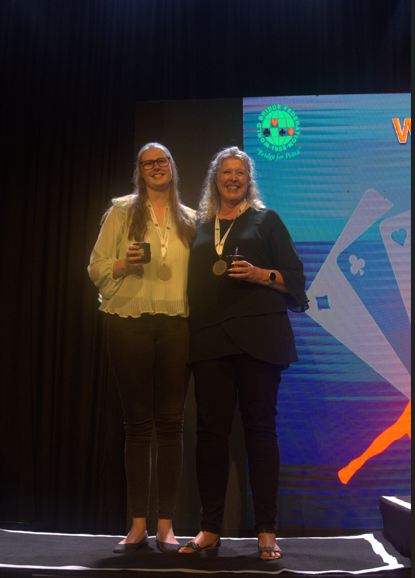
Did you like this article ?
Leave a comment below!


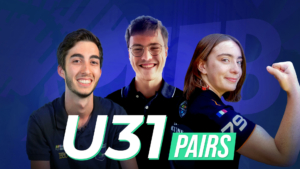

well done to you both !